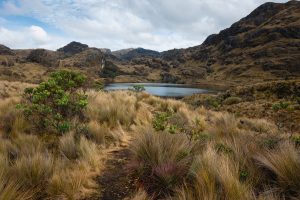Sackett et ux v Environmental Protection Agency
Sackett et ux (“and wife”) versus Environmental Protection Agency. Classic David v. Goliath matchup. Good thing the property owner couple had the Pacific Legal Foundation on their side. PLF scored two wins on the same day at the High Court – unprecedented? I don’t know, but rare air no doubt.
The Sacketts purchased property near Priest Lake Idaho in 2004. “In preparation for building a modest home, they began backfilling their property with dirt and rocks. A few months later, the EPA sent the Sacketts a compliance order informing them that their backfilling violated the CWA because their property contained protected wetlands. The EPA demanded that the Sacketts immediately “‘undertake activities to restore the Site’” pursuant to a “‘Restoration Work Plan’” that it provided. Sackett v. EPA, 566 U. S. 120, 125 (2012). The order threatened the Sacketts with penalties of over $40,000 per day if they did not comply.”
That was nineteen (19) years ago! For the Court to say that they have spent nearly a decade “navigating” the Clean Water Act appears to be quite an understatement in aid of a pun. The CWA applies to “waters of the United States.” The EPA in this case alleged that it had jurisdiction over the “wetlands” on the Sackett’s property because they had a “significant effect” on the ecology of nearby Priest Lake. To be exact, the EPA alleged the wetlands were “adjacent to” (in the sense that they are in the same neighborhood as) what it described as an “unnamed tributary” on the other side of a 30-foot road. App. 33. That tributary feeds into a non-navigable creek, which, in turn, feeds into Priest Lake, an intrastate body of water that the EPA designated as traditionally navigable. To establish a significant nexus, the EPA lumped the Sacketts’ lot together with the Kalispell Bay Fen, a large nearby wetland complex that the Agency regarded as “similarly situated.” According to the EPA, these properties, taken together, “significantly affect” the ecology of Priest Lake. Therefore, the EPA concluded, the Sacketts had illegally dumped soil and gravel onto “the waters of the United States.”
The Sacketts filed a suit in federal court alleging that EPA lacked jurisdiction because the wetlands on their property were not “waters of the United States.” They lost immediately because the District Court held that the EPA’s order was not final agency action. The High Court intervened and allowed the suit to proceed, yet there were seven additional years of remand proceedings before they lost again. And then they lost on appeal in the Ninth Circuit – based on the Circuit Court’s holding that the CWA applied to adjacent wetlands with a significant nexus to traditional navigable waters.
The Court relies mostly on dictionary definitions of the statutory text to arrive at the answer:
“In sum, we hold that the CWA extends to only those wetlands that are “as a practical matter indistinguishable from waters of the United States.” Rapanos, 547 U. S., at 755 (plurality opinion) (emphasis deleted). This requires the party asserting jurisdiction over adjacent wetlands to establish “first, that the adjacent [body of water constitutes] . . . ‘water[s] of the United States,’ (i.e., a relatively permanent body of water connected to traditional interstate navigable waters); and second, that the wetland has a continuous surface connection with that water, making it difficult to determine where the ‘water’ ends and the ‘wetland’ begins.” Id., at 742.”
Crystal clear like water, right?








